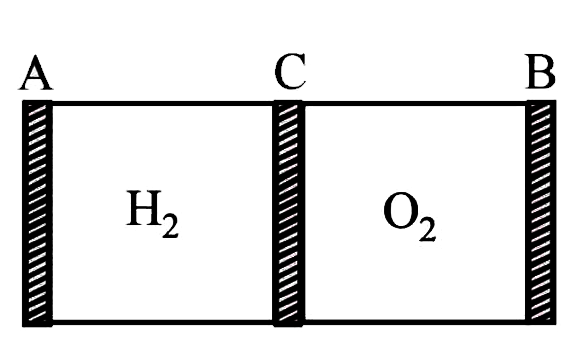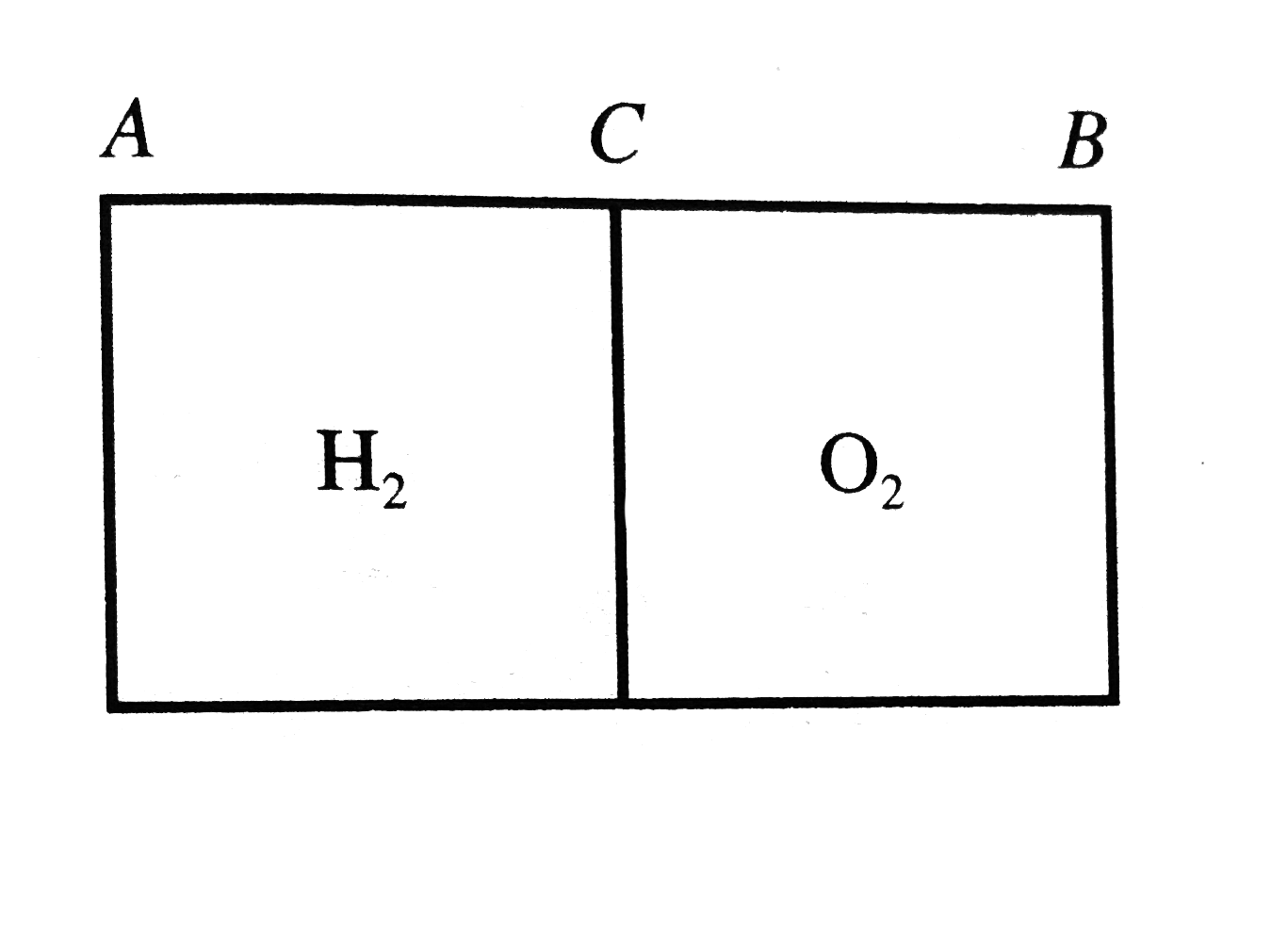AB is a ccylinder of length 1m fitted with a thin flexible diaphragn C at the middle and other thin flexible diaphragms A and B at the ends. The portions AC and BC contain hydrogen and oxygen gases respectively. The diaphragms A and B are set into vibrations of same frequency. what is the minimum frequency of these vibrations for which diaphragms C is a node? (Under the conditions of experiment vH2=1100m/s, v_(0_(2) = 300m//s).

The correct Answer is:A
It is given that C acts as a node. This implies that at A abd B antitodes are formed. Again it is given that the frequencies are same.

rArr v14l×p1=v24l×p2 or P1P2=v1v2=311
or, 11p1=3p2
This means that the third harmonic in AC is equal to 11th harmonic in CB.
Now, the fundamental frequency in AC
=(v14l=11004×0.5=550Hz
:. Frequency in AC=3×550=1650Hz and frequency in CB=11×150=1650Hz
Topper's Solved these Questions
Similar Questions
AB is a cylinder of length 1.0m fitted with a thin flexible diaphragm C at the middle and two others thin portions ACandBC contains hydrogen and oxygen gases , respectively . The diaphragms AandB are set into vibrations of same frequency . What is the minimum frequency of these vibrations for which the diaphragm C is a node ? Under the conditions of the experiment , the velocity of sound in hydrogen is 1100m/s and in oxygen is 300m/s.

View SolutionA cylinder of length 1m is divided by a thin perfectly flexible diaphragm in the middle. It is closed by similar flexible diaphragams at the ends. The two chambers into which it is divided contain hydrogen and oxygen. The two diaphragms are set in vibrations of same frequency. What is the minimum frequency of these diaphragms for which the middle diaphragm will be motionless? Velocity of sound in hydrogen is 1100m/s and that in oxygen is 300m/s.
View Solution
Knowledge Check
Vaginal diaphragm is
ASpermicidalBAble to prevent descent of ovaCable to prevent sperm contact with ovumDOivcidalThe action of the vaginal diaphragm is
ATo prevent the ova to come in the uterusBTo prevent the sperm to come in contact with ovaCspermicidalDAnti-implantationalDuring inspiration the diaphragm
ARelaxes to become dome-shapedBContracts and flattensCExpandsDShows no change

